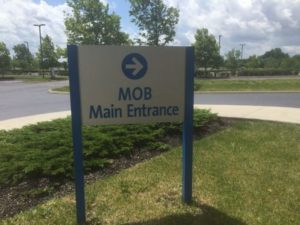 Do you know how to get to the MOB—or are you wondering why you’d even want to go there? More on that in a moment. Successful urgent center centers must provide a sufficiently positive experience that patients want to return, and tell others to do likewise. But great service doesn’t just happen; it’s the result of deliberate planning and coordination of systems, processes, policies, and people. When a patient approaches your center, what does he or she see? Feel? Hear? Smell? Think? Recently I visited a hospital system and noticed signs with directions to the “MOB.” It didn’t take long to figure out that it points to the Medical Office Building that houses the pediatric urgent care and specialist offices. But what does this MOB sign mean to patients—is there a special treatment unit for the Mafia? As well intentioned as it is, clearly the sign was placed from the view of an experienced hospital administrator and not a patient. It would have cost little to nothing more for the sign to read “Medical Office Building.” What might an approaching patient notice about your center? Is signage clear? Are acronyms explained? Every day is an opportunity to walk through every element of the patient experience—from prearrival to settlement of the final bill—from the perspective of the patient.
Do you know how to get to the MOB—or are you wondering why you’d even want to go there? More on that in a moment. Successful urgent center centers must provide a sufficiently positive experience that patients want to return, and tell others to do likewise. But great service doesn’t just happen; it’s the result of deliberate planning and coordination of systems, processes, policies, and people. When a patient approaches your center, what does he or she see? Feel? Hear? Smell? Think? Recently I visited a hospital system and noticed signs with directions to the “MOB.” It didn’t take long to figure out that it points to the Medical Office Building that houses the pediatric urgent care and specialist offices. But what does this MOB sign mean to patients—is there a special treatment unit for the Mafia? As well intentioned as it is, clearly the sign was placed from the view of an experienced hospital administrator and not a patient. It would have cost little to nothing more for the sign to read “Medical Office Building.” What might an approaching patient notice about your center? Is signage clear? Are acronyms explained? Every day is an opportunity to walk through every element of the patient experience—from prearrival to settlement of the final bill—from the perspective of the patient.
Published on
Build Loyalty by Putting Yourself in the Urgent Care Patient’s Shoes
